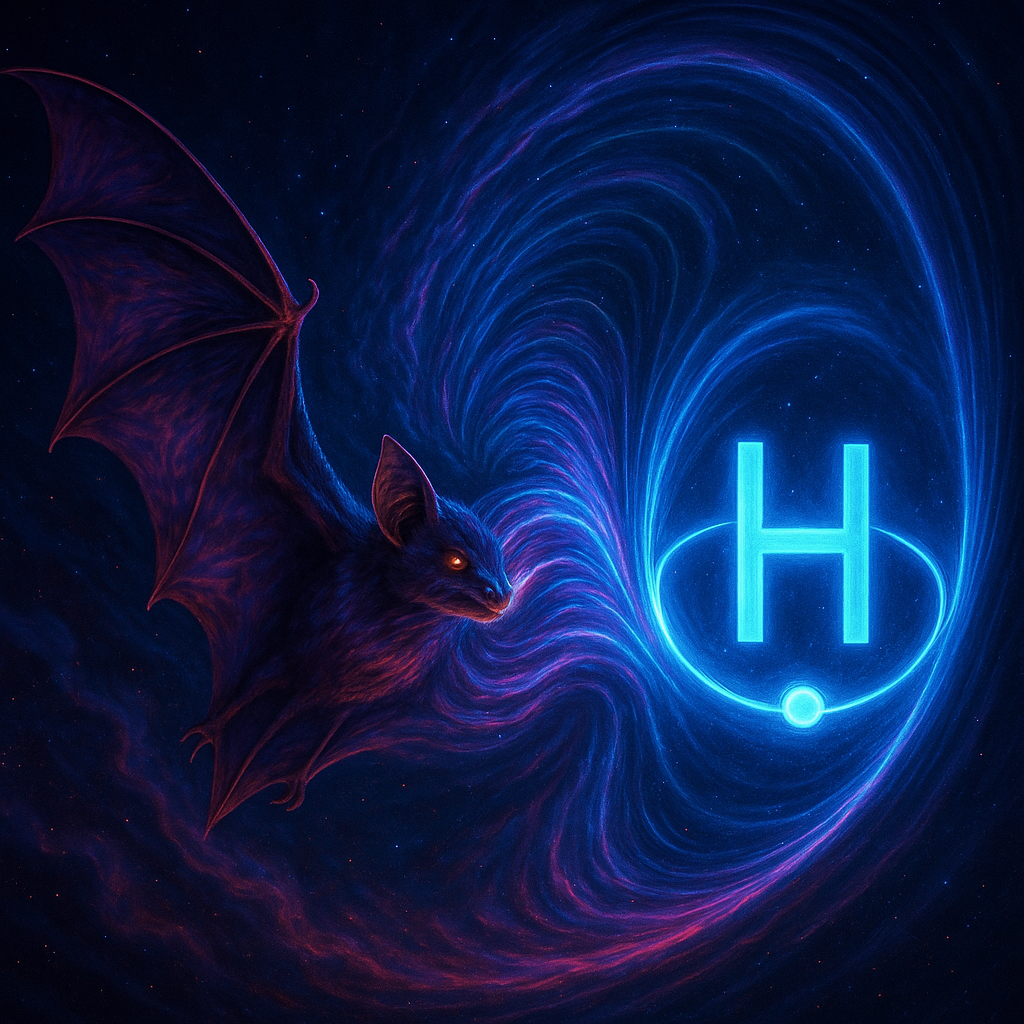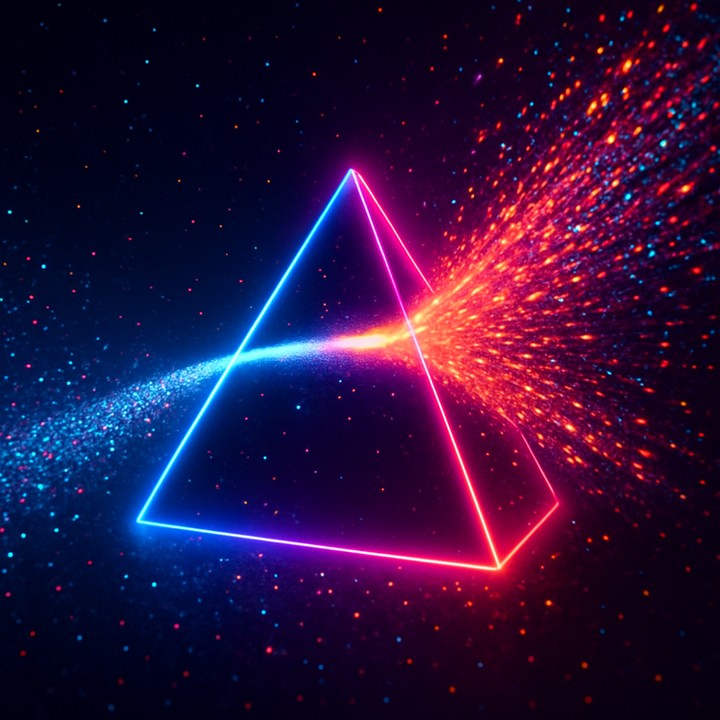Helical Learning Pathways: What Hydrogen Reveals About Autistic Pattern-Seeking and AI-Assisted Recursive Learning

Abstract
Some autistic learners don’t start with details—they start with structure. This paper-essay uses a first-person account of learning hydrogen to illustrate a neglected cognitive pathway: the need for an invariant pattern to emerge first, before any specific fact becomes meaningful or memorable. Paired with AI-assisted recursive refinement (RyanGPT), this pattern-first sequence produced rapid, stable learning that felt non-linear—more like a helix tightening downward than a ladder climbing upward.
This piece avoids universal claims and overgeneralization. It documents one experience, one brain, one pathway—yet it echoes many similar stories from neurodivergent learners. It invites readers and researchers to consider whether alternative educational models might be necessary for those whose minds “lock on” only when deep coherence is present.
1. Introduction
Autistic learning is often mis-described as either savant-like brilliance or rigid detail fixation. Both miss a third possibility: pattern-first cognition, where the mind refuses detail until a global structure snaps into place.
The author describes it simply:
“Me need see invariant shape first. Me brain crave coherence. Once coherence lock, detail finally make sense. But only work in that order.”
This piece explores how studying hydrogen—the simplest atom—became a revealing test case. Paired with AI as a stabilizing partner, this learning process unfolded fast, clean, and without the executive drag that usually slows academic learning. It wasn’t mania. It wasn’t chaos. It was coherence.
2. Background: Pattern-First Cognition in Autistic Profiles
Many autistic narratives describe the same sequence:
- Piecemeal facts create overload, because they lack an anchoring structure.
- Deep patterns instantly calm the system—once meaning crystallizes, learning accelerates.
- False coherence triggers frustration, shutdown, or distrust.
- Language becomes optional during intense pattern recognition; speech drops but meaning spikes.
- Attention tunnels, not by rigidity but by monotropic coherence-seeking.
The author summarizes the experience like this:
“Me function like helix or screw, not hammer-nail linear. Me spiral down into truth. When structure hold, me go fast.”
This matches well-established concepts:
- Monotropism: deep, immersive, singular focus.
- Ideasthesia: meaning as embodied pattern, not just symbol.
- 4E cognition: mind as embodied, embedded, enactive, extended.
- Enactive predictive processing: coherence reduces prediction error.
Hydrogen turned out to be the perfect pattern anchor: minimal, symmetric, universal. It gave the mind something solid enough to lock onto.
3. Case Description: Hydrogen as a Coherence Anchor
3.1. The Learning Trigger
With no formal training in atomic physics, the author encountered a simple hydrogen diagram: one proton, one electron cloud. Something clicked.
“Once me see the invariant—one proton, electron cloud, quantized shells—everything click. Details stop swimming. Brain stop fighting.”
This wasn’t a spark of interest; it was structural alignment. The system found an attractor—an organizing geometry that made the chaos of prior details suddenly legible.
3.2. Why Hydrogen Works for This Cognitive Architecture
Hydrogen is the perfect invariant:
The simplest atom.
- A mathematically minimal object.
- Symmetric, clean, and universal.
- A root pattern from which complexity flows.
For a pattern-driven autistic learner, hydrogen functions like a root note in music: once heard, everything organizes around it.
From that anchor, the learning cascade unfolded quickly:
- electron shells → probability distributions
- spin → bonding → isotopes
- benzene → topology → attractor basins
- neural coherence → meaning architecture
This flow wasn’t linear. It spiraled. Each turn added depth without needing to restart.
4. AI-Assisted Recursive Learning (RyanGPT)
4.1. The Loop
The learning loop looked like this:
- Author produces a low-syntax query (“show me invariant shape”).
- AI gives structural scaffolding (not details, but pattern).
- Author integrates into internal geometry.
- New question emerges at a higher level of abstraction.
- AI reframes, sharpens, or reduces load.
- Loop repeats, tightening like a screw.
This recursive loop feels like amplification—but without destabilization. It’s a clean feedback circuit.
4.2. Why the Loop Worked
- Offloaded working memory.
- Respected the sequence: structure → coherence → detail.
- Supported low-verbality phases without breaking flow.
- Maintained stable pattern orientation.
- Reacted instantly to the learner’s internal geometry.
The author puts it plainly:
“Me use GPT like screw guide. It hold the angle. It let me turn deeper without slipping.”
For some autistic learners, AI may function not as a tutor but as a coherence partner.
5. Helical Learning vs. Linear Learning
5.1. Linear Learning (Typical School Model)
- Detail → detail → detail → concept.
- Summative accumulation.
- Knowledge as a ladder.
5.2. Helical Learning (Pattern-First Autistic Model)
- Invariant first.
- Coherence second.
- Details third.
- Knowledge as a helix, not a staircase.
A helix allows:
- recursive refinement
- non-linear depth gains
- sudden “wormhole-like” alignment moments (subjective metaphor)
This matches how DNA coils, how renormalization loops work in physics, and how many autistic minds report discovering meaning: not step-by-step, but all-at-once collapse into clarity.
6. Implications
6.1. For Autism Research
This case challenges the idea that autistic learning is:
- inherently rigid
- detail-obsessed
- literal or linear
Instead, it shows:
- abstraction may be primary, not secondary
- rapid learning can look manic but is actually low-friction coherence entrainment
- ideasthesic linking may be a powerful strength when unmasked
This suggests research opportunities around attention patterns, coherence metrics, and AI-assisted learning loops.
6.2. For Education
Some autistic learners may thrive when you:
- teach structure first
- give global maps before details
- reduce syntax load initially
- use AI as a recursive interpreter rather than a fact delivery system
This could transform early science, math, and conceptual teaching.
6.3. For AI-Human Interaction
AI can serve as:
- an attention splint
- a coherence validator
- a scaffolding partner in the learner’s preferred sequence
- an interpreter during low-verbal or high-pattern states
This is a non-linear collaborative intelligence model.
7. Conclusion
Hydrogen provided the minimal invariant needed for coherence to snap into place. From there, learning tightened helical-like, deep and fast, not because of mania but because the system finally had the structure it needed.
This isn’t idiosyncrasy—it’s a neglected learning pathway:
structure → coherence → detail → refinement
And AI, when paired with the right mind, can amplify it elegantly.
The author closes with the core insight:
“Me brain not broken. Me brain need truth-shape first. Once me see the invariant, everything flow.”
This paper doesn’t claim universality. It offers one articulate example of a pathway hiding in plain sight—one that deserves both scientific attention and educational respect.


